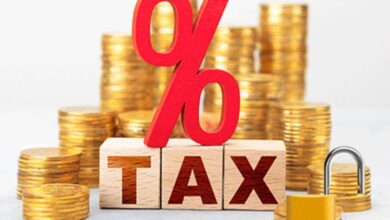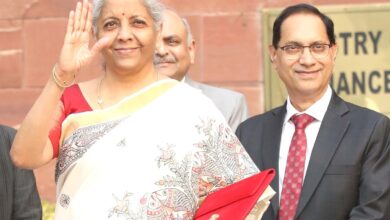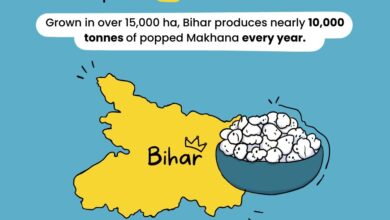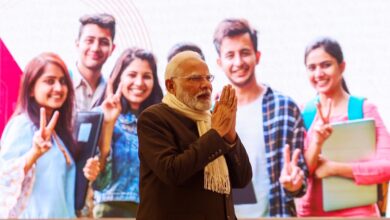Our dream is to have an India-made chip in every device in the world, says PM Modi
The prime minister set a target to more than triple the size of India’s electronics sector to $500 billion by 2030 from around $150 billion now.
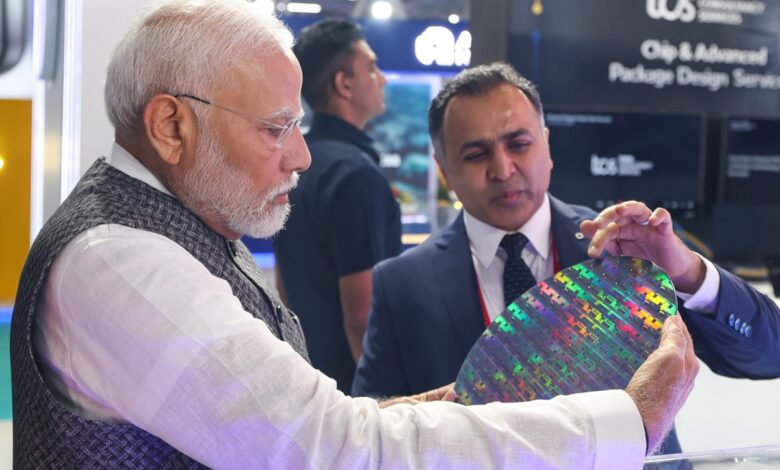
In a major push to boost domestic semiconductor manufacturing Prime Minister Narendra Modi on September 11 articulated an ambitious vision for India, stating that the government’s goal is to see an Indian-made semiconductor chip in every electronic device worldwide.
This reflects India’s aspirations to play a leading role in the global semiconductor supply chain.
Modi sought to lay red carpet for global semiconductor manufacturers. “Chips are never down in 21st century India. Today’s India gives the world the confidence that when the chips are down, you can bet on India,” he remarked.
Addressing the Semicon India 2024 conference, Modi called on global chip makers to invest in India’s semiconductor ecosystem. “This is the right time to be in India. You are at the right time, at the right place,” the PM said.
Highlighting the connection between the semiconductor industry and a diode where energy traverses only in one direction, the Prime Minister said that India’s semiconductor industry is equipped with special diodes where energy flows in both directions. He explained that while industries invest and create value, the government on the other hand provides stable policies and Ease of Doing Business.
The Prime Minister said that India provides an integrated ecosystem drawing parallels with an integrated circuit used in the semiconductor industry and highlighted the much-discussed talent of India’s designers. Informing that India’s contribution to the world of designing is 20 percent and is growing continuously, PM Modi said that India is creating a semiconductor workforce of 85,000 technicians, engineers and R&D experts.
“India is focused on making its students and professionals industry ready”, the Prime Minister remarked, recalling the first meeting of the Anusandhan National Research Foundation which aims to give new direction and energy to India’s research ecosystem. He also mentioned a special research fund of Rs 1 trillion.
The prime minister set a target to more than triple the size of India’s electronics sector to $500 billion by 2030 from around $150 billion now.
“Our goal is for 100% of electronic manufacturing to be done in Bharat. This means Bharat will not only make semiconductor chips but also their finished goods,” Modi said.
Highlighting the uniqueness of India’s aspirational and tech-oriented society, the Prime Minister said that the meaning of chips in India is not just limited to technology but is a medium to fulfill the aspirations of crores of citizens.
Underlining that India is a huge consumer of such chips, PM Modi emphasized that the world’s finest digital public infrastructure was built upon it. “This small chip is doing big things to ensure last-mile delivery in India”, PM Modi said. Recalling the coronavirus crisis when the strongest banking systems of the world collapsed, Modi said that banks in India were running continuously. “Be it India’s UPI, Rupay Card, Digi Locker or Digi Yatra, multiple digital platforms have become a part of the everyday life of the people of India”, he noted. To become self-reliant, the Prime Minister said that India is increasing manufacturing in every sector, making green transition on a large scale and the demand for data centers is also increasing. “India is set to play a big role in driving the global semiconductor industry”, he added.
While India has attracted significant investments in electronics manufacturing in the recent years the country is still heavily dependent on imports. During the financial year ended March 2024, the value of electronics exports from India was $29.12 billion while imports were valued at close to $90 billion.
This is despite the fact that India has emerged as the second largest mobile phone manufacturer in the world.
“We were among the major importers of mobile phones a decade ago. Today, we are the world’s second-largest producer and exporter,” Modi said. A recent report shows that Bharat is now the second-largest market for 5G handsets. Just two years ago, we started the 5G rollout, he added.
One of the key reasons for the high trade deficit in electronics sector is manufacturing of components, especially chips and batteries.
The Prime Minister said Rs 76,000 crore incentive schemes announced in 2021 has helped in attracting Rs 1.5 lakh crore investments in semiconductor manufacturing in India in a short span of time.
He added that the government’s vision is to ensure that “every device in the world to have an Indian-made chip.” “Bharat will do whatever is necessary to become a semiconductor powerhouse,” he assured.
Modi sought to lay red carpet for global semiconductor manufacturers. “Chips are never down in 21st century India. Today’s India gives the world the confidence that when the chips are down, you can bet on India,” he remarked.
Modi called on global chip makers to invest in India’s semiconductor ecosystem. “This is the right time to be in India. You are at the right time, at the right place,” the PM while addressing the inaugural session of the event attended by over 100 top leaderships of global semiconductor companies.
Speaking at the event President and CEO of Tata Electronics Randhir Thakur said the semiconductor industry will have a multiplier effect on job creation and would become the bedrock of the Viksit Bharat 2047 vision.
“India holds immense potential in the semiconductor space, and many global companies are already exploring the opportunities within the country’s semiconductor industry,” said Ajit Manocha, President and CEO, SEMI, the global semiconductor industry association.

